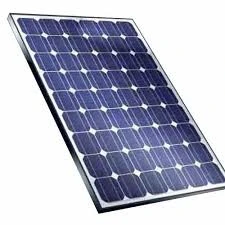Optimizing Efficiency of Solar Panels for Maximum Performance and Energy Output
Understanding the Performance of Solar Panels
In recent years, solar energy has emerged as one of the most promising alternatives to traditional fossil fuels. As the world grapples with the urgent need to transition to renewable energy sources, the performance of solar panels has become a focal point of discussions surrounding sustainability and environmental impact. This article delves into the various factors that influence the performance of solar panels, how efficiency is measured, and the implications for both residential and commercial applications.
Efficiency Ratings
The performance of solar panels is predominantly measured by their efficiency rating, which indicates the percentage of sunlight that the panel can convert into usable electricity. Most modern solar panels boast efficiency ratings between 15% to 22%. Higher efficiency means that a panel can generate more electricity from the same amount of sunlight, making it a crucial factor for both homeowners and businesses considering solar power installations.
Efficiency is significantly influenced by the technology used in manufacturing the panels. There are primarily three types of solar panels monocrystalline, polycrystalline, and thin-film. Monocrystalline panels are known for their high efficiency and longevity, often exceeding 20%. Polycrystalline panels, while slightly less efficient, offer a more cost-effective option. Thin-film panels, although easier to install and lightweight, typically have lower efficiency ratings.
Environmental Factors
The performance of solar panels is not static; it is affected by various environmental conditions. Factors such as temperature, shading, and geographic location play a crucial role in determining the energy output of solar panels. For example, while solar panels perform optimally in direct sunlight, high temperatures can decrease their efficiency. Adequate cooling mechanisms and installation angle can mitigate these effects.
Moreover, shading from trees, buildings, or other obstacles can significantly reduce the effectiveness of solar panels. It is essential to consider the placement of solar panels carefully to minimize shading throughout the day. Tools such as solar pathfinders can help homeowners determine the best locations for installation based on their specific environment.
performance solar panels

Performance Degradation
Another important aspect of solar panel performance is degradation over time. Typically, solar panels experience a gradual decline in efficiency, approximately 0.5% to 1% per year. As a result, a panel with a 20% efficiency rating today may only deliver around 80-90% of its original output after 20-25 years. This decline can be mitigated by selecting high-quality panels from reputable manufacturers that offer strong warranties, often up to 25 years.
Investment and Financial Considerations
Understanding the performance percentages of solar panels is not only pertinent from a technical standpoint but also has significant financial implications. Higher efficiency panels often come at a premium cost, but their ability to convert more sunlight into electricity can lead to substantial long-term savings on energy bills. For many homeowners and businesses, the return on investment (ROI) is a key consideration when choosing an appropriate solar solution.
Government incentives, such as tax credits and rebates, can further increase the affordability of solar installations, making it easier for consumers to justify the initial investment. Additionally, financing options have become more accessible, allowing individuals to pay for their solar systems over time rather than upfront.
Conclusion
The performance of solar panels is a crucial factor to consider for anyone looking to harness solar energy. By understanding the different efficiency ratings, environmental influences, potential degradation, and financial implications, consumers can make informed decisions that align with their energy needs and sustainability goals. As technology continues to evolve, the efficiency and performance of solar panels are expected to improve, making solar energy an even more viable option for the future. Investing in solar panels today not only contributes to a greener planet but also offers the potential for significant savings in energy costs over time.
-
Unlocking Energy Freedom with the Off Grid Solar InverterNewsJun.06,2025
-
Unlock More Solar Power with a High-Efficiency Bifacial Solar PanelNewsJun.06,2025
-
Power Your Future with High-Efficiency Monocrystalline Solar PanelsNewsJun.06,2025
-
Next-Gen Solar Power Starts with Micro Solar InvertersNewsJun.06,2025
-
Harnessing Peak Efficiency with the On Grid Solar InverterNewsJun.06,2025
-
Discover Unmatched Efficiency with the Latest String Solar InverterNewsJun.06,2025







